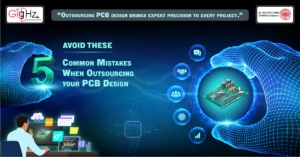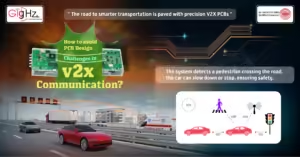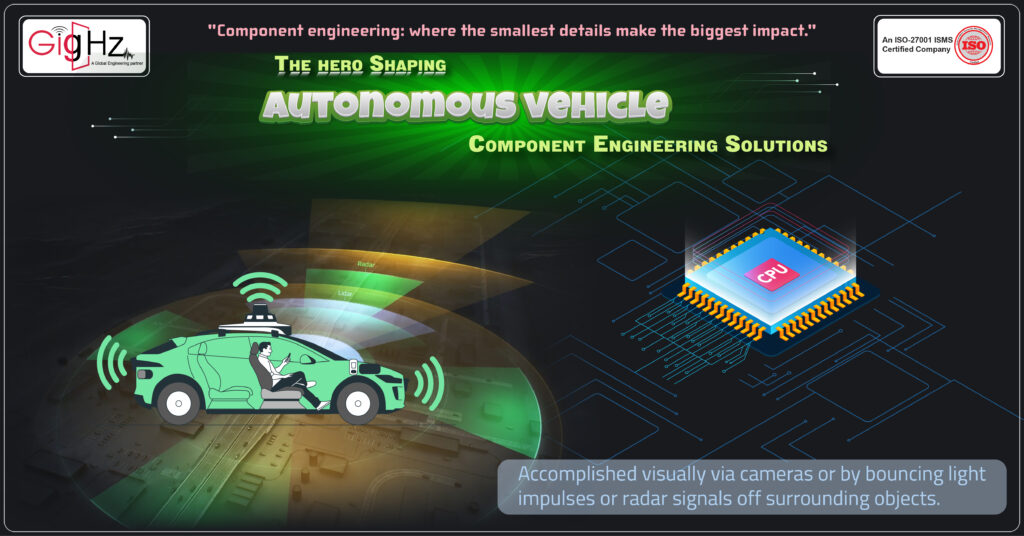
Component Engineering Solutions
By the year 2035, self-driving technology has the potential to generate between $300 billion and $400 billion in revenue.
New research reveals what’s needed to win in the fast-changing passenger car market.
So, what’s the Autonomous Vehicles(AVs) or Self Driving Cars means for?
Self-driving cars see what’s going on around them using three main electronic “eyes”—radar, cameras and laser-based LiDar, which stands for light detection and ranging.
All three feed data into on-board processors, using sophisticated software, algorithms and machine learning to send signals to the vehicle’s actuators to trigger appropriate actions such as braking, steering and acceleration.
The array of sensors can detect a wide variety of road features and obstacles such as lane markings, curbs, pedestrians, cyclists or other vehicles.
This is done either visually, through cameras, or by bouncing light impulses or radar signals off of surrounding objects.
While self-driving automation technologies help improve safety, they are not 100% infallible, and their effectiveness can be diminished, when sensors or lane markings are covered by snow or other heavy precipitation.
So,
Imagine this one hero taking the spotlight, playing a crucial role in driving forward the advancements we’re seeing – that hero is none other than Component Engineering.
In the context of component engineering, let’s explore how the design and selection of electronic components play a crucial role in the development of autonomous vehicles.
Autonomous vehicles, or self-driving cars, rely on a sophisticated network of sensors, processors, actuators, and communication systems to navigate roads, interpret surroundings, and make real-time decisions.
Component Engineering and Product Lifecycle Management for Av's
Component engineering plays a vital role in the production and manufacturing of autonomous vehicles (AVs).
It involves the selection of the right parts from various component manufacturers and distributors to ensure the quality, reliability, and compliance of the final product.
A company offering component engineering solutions will work across different industries, including telecom and medical hi-tech electronics, to create efficient and reliable devices. Component engineering services also include testing, analysis, and support to optimize the supply chain and reduce costs. The goal is to lead product development companies in a way that offers value to the user and supports sustainability.
One important aspect of component engineering is the ability to provide component data that is relevant and reliable.
This is crucial in the manufacturing process to ensure that all parts meet the necessary regulations and standards. With the support of an expert in component engineering, companies can effectively reduce production costs and optimize their supply chain.
By practicing effective engineering processes and testing, companies can ensure that their AVs are well-equipped to meet the demands of the industry and the consumer.
The hero Shaping AVs: Component Engineering Solutions
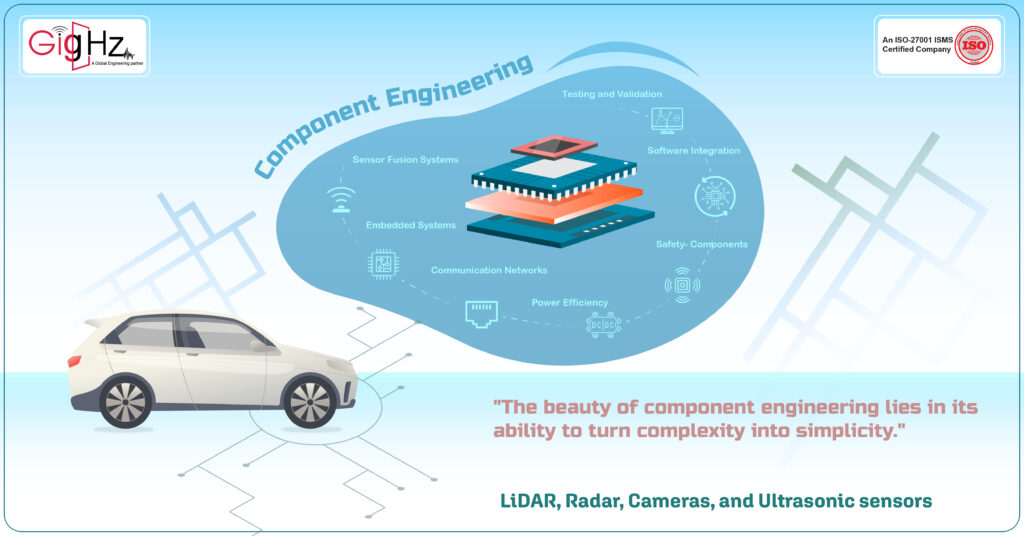
Here’s how component engineering contributes to the innovation and advancement of autonomous vehicle technology:
- Sensor Fusion Systems: Component engineers are tasked with integrating various sensors, such as LiDAR, radar, cameras, and ultrasonic sensors, into a cohesive sensor fusion system. By selecting high-quality sensors with precise specifications and compatibility, they enable accurate perception of the vehicle’s environment for safe navigation.
- Embedded Systems and Processors: Autonomous vehicles require powerful embedded systems and processors to process vast amounts of data in real time. Component engineers select advanced microcontrollers, GPUs, and AI chips that can handle complex algorithms for object detection, path planning, and decision-making while ensuring reliability and energy efficiency.
- Communication Networks: Component engineering involves designing robust communication networks within the vehicle and with external infrastructure. Engineers choose reliable networking components, such as Ethernet switches, CAN bus controllers, and wireless modules, to facilitate seamless data exchange between onboard systems and external servers for updates and connectivity.
- Power Management and Energy Efficiency: Autonomous vehicles demand efficient power management solutions to support continuous operation and minimize energy consumption. Component engineers select power management ICs, DC-DC converters, and battery management systems that optimize power distribution, charging, and thermal performance to enhance the vehicle’s autonomy and reliability.
- Safety-Critical Components: Ensuring the safety and reliability of autonomous vehicles is paramount. Component engineers focus on selecting safety-critical components, such as redundant sensors, fail-safe actuators, automotive-grade ICs, and functional safety mechanisms, to meet stringent safety standards and mitigate risks associated with autonomous driving.
- Software Integration and Updates: Component engineering extends to software integration and over-the-air updates for autonomous vehicle systems. Engineers select components compatible with over-the-air update capabilities, secure boot protocols, and software-defined architectures to enable remote diagnostics, feature enhancements, and cybersecurity measures for continuous improvement and adaptability.
- Testing and Validation Equipment: Component engineers utilize specialized testing equipment, such as hardware-in-the-loop (HIL) simulators, environmental chambers, and reliability testing tools, to validate component performance under various conditions. Rigorous testing ensures component durability, functionality, and compliance with automotive industry standards for safe autonomous operation.
Our Component Engineering Services
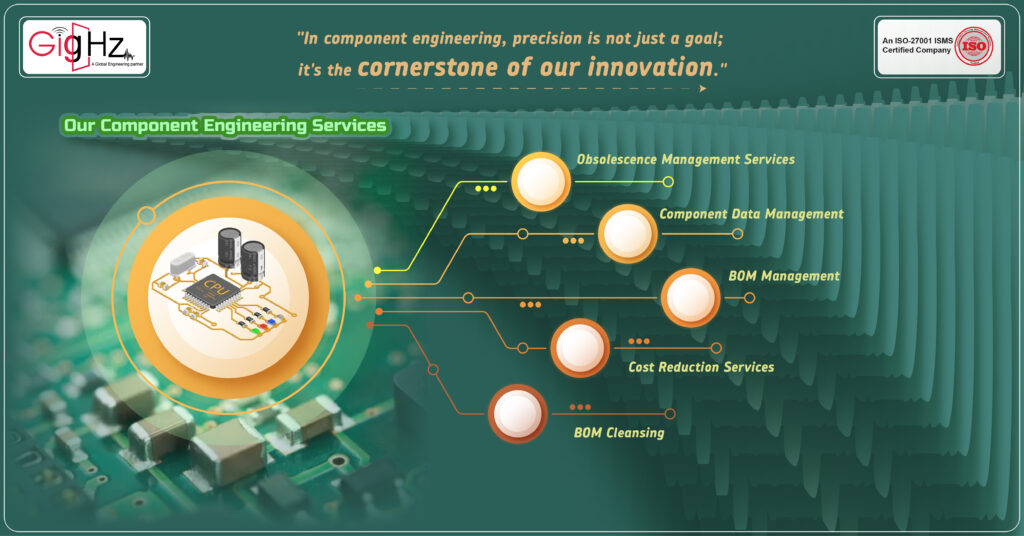
We evaluate parts from various suppliers based on electrical, thermal, mechanical parameters to provide unbiased suggestions that enhance your product’s capabilities.
Partner with GigHz for end-to-end component engineering services, from selection to modeling and integration, that optimize your product development.
Our commitment to engineering excellence and software functionality accelerates your product’s path to market.
Obsolescence Management Services
We proactively monitor component life cycles to mitigate obsolescence risks through alternate recommendations, custom orders and redesign support.
Component Data Management
We deliver complete traceability and accessibility of component data through centralized systems integrated across your supply chain.
BOM Management
We optimize BOMs for cost, supply chain continuity and engineering compliance through standardized processes.
Cost Reduction Services
We identify opportunities for more cost-effective components through evaluation of engineering priorities and supply market conditions.
BOM Cleansing
We clean up and consolidate as-built BOMs, eliminating redundancies and improving alignment with engineering BOMs for greater efficiency.
Why we Do? GigHz DNA
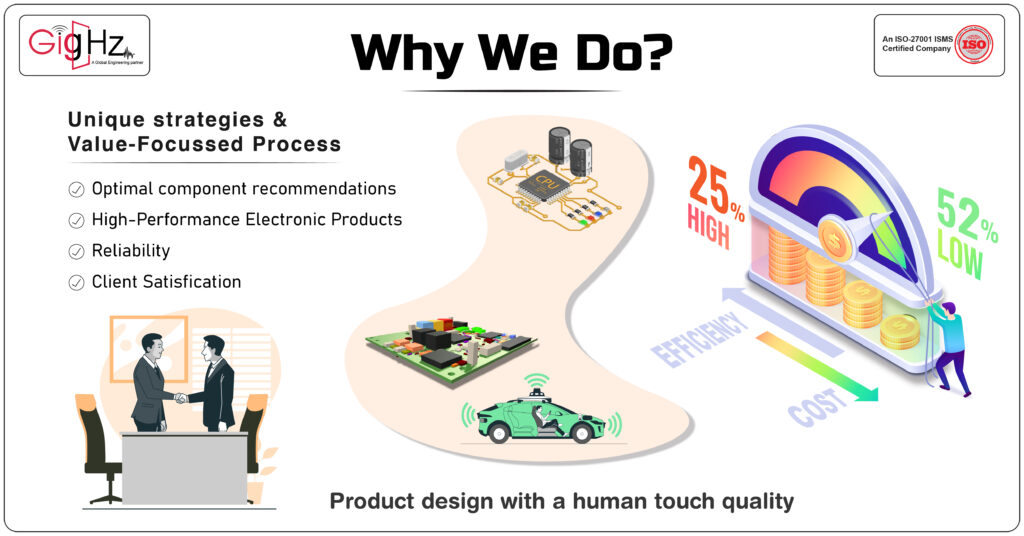
We challenge our Component Engineering capabilities with Autonomous Vehicles emerging technologies to keep your time and cost in control, thereby transforming product design with human touch quality.
Despite the challenges in technology, we stand out from the competition due to our innovative methods and value-driven process.
This approach enables us to achieve a significant cost reduction of 52% while simultaneously increasing operational efficiency by 25%.
Our Notable Upgrade : Engineering as a Service(EaaS)
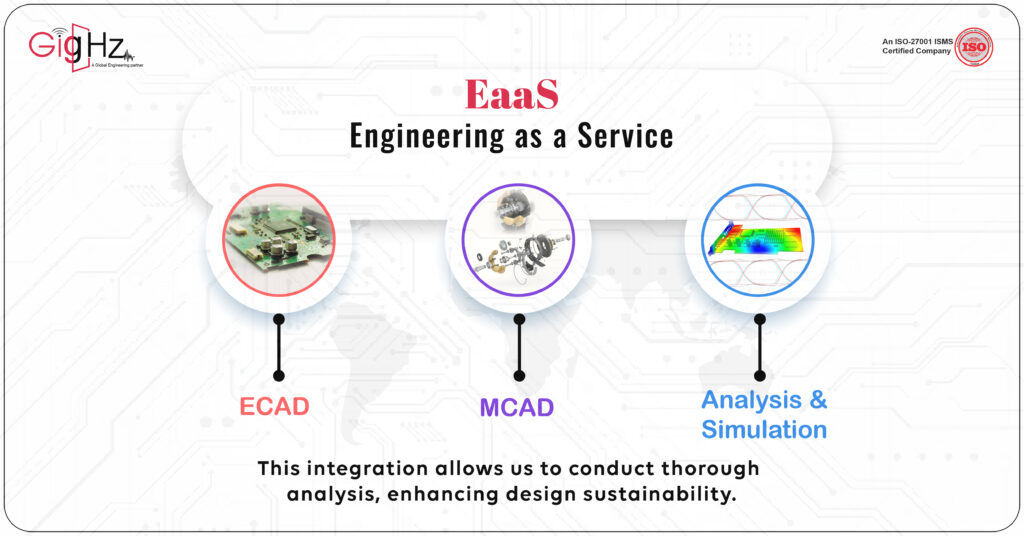
As an engineering services company, GigHz can provide the following benefits for component engineering across startups and enterprises:
Component selection – Our engineers can recommend optimal components by evaluating technical specifications, reliability, cost, availability, and other factors.
Supplier management – We can manage communications and relationships with component suppliers during qualification, sampling, testing, and ongoing production.
Thus, we help startups and enterprise companies with specialized component engineering expertise and bandwidth to accelerate product development.
Conclusion
After considering the key points discussed in the content, it is evident that PLM plays a crucial role in the success of GigHz for industrial automation services across different products.
Utilizing component distributors and LinkedIn for networking and information sharing is essential for us, OEMs and contract manufacturers to stay ahead in the market.
The internal PLM system is a valuable component in managing client information and providing a competitive proposition.
Companies must take into consideration the various tools and platforms available to streamline their processes and improve efficiency. Overall, a well-executed PLM strategy can optimize operations and drive growth in the industrial automation sector.
Schedule a Call. Book a Free Consultation Now. https://calendly.com/gighz/30min
The hero Shaping AVs: Component Engineering Solutions

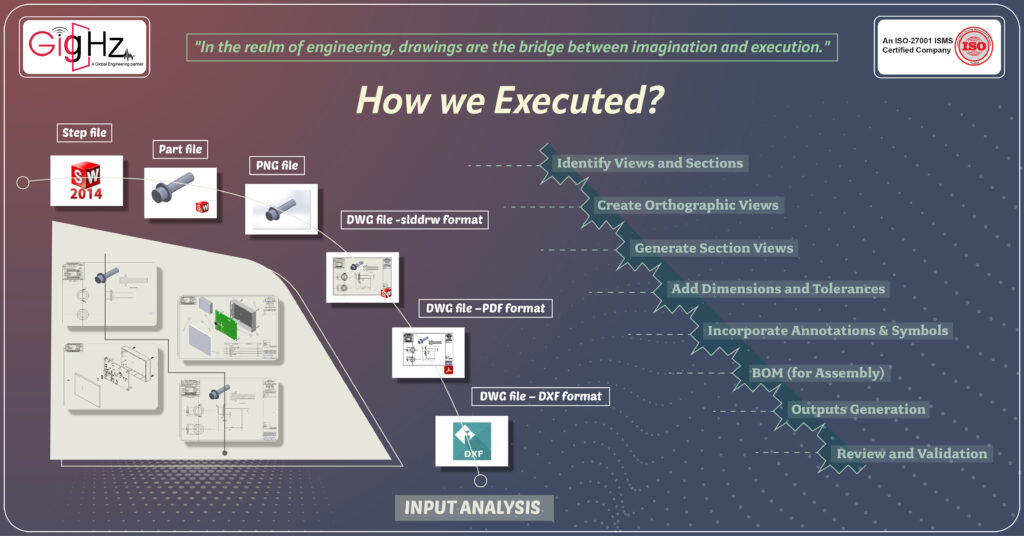
Our Notable Upgrade: Engineering as a Service(EaaS)
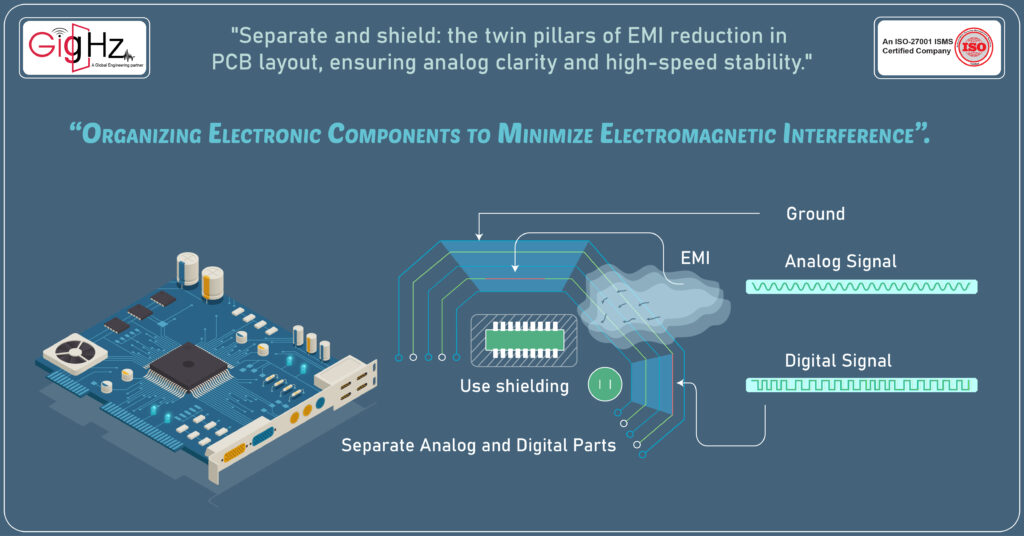
Book a Free Consultation Call
Partner with Gighz and bring your most innovative design concepts to life. Our engineering cad services accelerate development so you can focus on your big vision.
As we conclude our discussion on PCB power integrity, is effective for understanding the basics of power integrity and how to effectively perform power integrity analysis in your board design.
Addressing power and ground planes is crucial in ensuring stable power delivery and avoiding signal integrity problems.
By leveraging design tools and simulations, you can identify and resolve power integrity issues early in the system design phase, providing a solid foundation for the next PCB design.
Utilizing techniques, we analyze power and ground pins, power rail probes, and PDN in a PCB is essential to ensure power integrity throughout the power system.
Discover our Specialities. Visit our Services Page. https://gighz.net/services/

